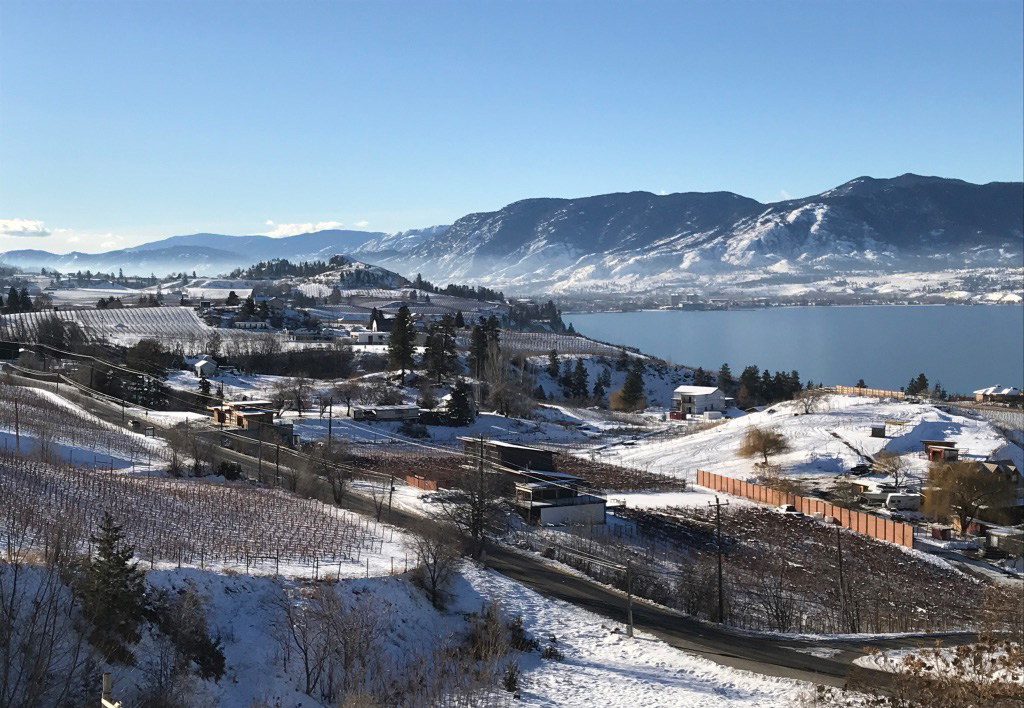Okanagan Valley sub-apps: will they get there?

The topic of sub-appellations in British Columbia is never far from the minds of local winemakers and wine lovers. The Okanagan Valley is now home to nearly 200 wineries in a 150-plus kilometre span from Osoyoos at the US border to north of Vernon.
Those who have had the pleasure of visiting will have noted the geographic and climatic variations, and that these influence the characteristics of the wines. And yet, the officially sanctioned appellations in British Columbia are only five, and the entire Okanagan Valley comprises one appellation.
By comparison, Washington’s sprawling Columbia Valley appellation, at 200 miles in length, encompasses seven smaller sub-appellation AVAs (American Viticultural Areas). According to VQA Ontario, the Niagara Peninsula appellation is divided into two regional appellations and ten sub-appellations.
Why, when many of the major regions of the wine world divide themselves so apparently logically (or at least on some historical/climatic/terroir basis) into sub-regions, does BC continue to lag in this evolution of its wine identity?
On a number of visits over the past six months to various parts of the Valley, it was brought home more clearly than ever before that the Okanagan Valley appellation is a series of sub-regions, with unique characteristics and identities. In fact, the more you talk to BC wine people, the more you realise that the Okanagan is already informally referred to by a number of sub-regions or sub-appellations. “There’s a new winery on the Naramata Bench you should check out.” Or, “The plantings along Golden Mile have exploded recently.” These are (fictional) examples of some of the expressions you hear around the Okanagan wine industry, and they are a kind of shorthand for the sub-regional definitions that are already informally recognised.
Decoding this shorthand could be a fruitful analytical exercise, but for now I suggest that it includes the concepts not only of location, but of meso- and micro-climate, terroir, an emerging recognition that certain varietals flourish in certain settings and soil types, and – admittedly, looking ahead a few years as more experience is gained and the industry matures – a certain stylistic convergence.
The arguments in favour of taking the formal step of recognising sub-appellations of the Okanagan Valley are easy to make. Sub-appellations identify and embody the climate, soil and geographic characteristics specific to a sub-region. They aid wine lovers in identifying where – in the sea of wineries that populate the Valley – their bottle comes from, and where their favourite wineries are located. Depending on how the rules are written, sub-appellations can add a layer of authentication beyond the Vintners Quality Alliance (VQA) designation of the origin of the grapes, and speak to the qualities inherent in the wine. They can enhance the knowledge of new or more distant wine consumers of what the Okanagan Valley is all about. They can help wineries brand and market their products more effectively. They may even aid the competitiveness of the BC wine industry as a whole. And so on.
However, as with most things related to the BC wine industry, it is never that simple, as keen observers and sometimes-exasperated long-time supporters have noted over the years. It makes sense to cure the present anomaly that non-VQA wineries can – and some do – add their own sub-appellation flourish to their labels, while VQA labelling rules constrain participants to using the generic Okanagan Valley appellation. (A quick check of the BC Wines of Marked Quality Regulation sets out this and other labelling rules).
This is not to make light of some legitimate concerns and issues that need to be addressed. The Okanagan wine industry is made up of large, medium, small, established and new wineries. Some are reliant solely on their estate vineyards, and some own or contract their vineyards and grape growing all over the Okanagan and beyond (the Similkameen Valley – another recognised appellation – is home to many a vineyard producing for Okanagan wineries). Some have considerably more resources and the interest to pursue broader goals for the industry, while others prefer to (or need to) focus solely on their own operations.
Where should the geographic boundaries be drawn? What if you’re just on the outside of some arbitrary line but want in? What if the eventual rules (under consideration by the BC Wine Authority – the relevant regulatory body) are inflexible in dealing with the reality of contract vineyards lying outside the sub-appellation boundaries? What is the appropriate way of displaying the sub-appellation on the label? Can a winery opt out if it chooses? Can it opt in?
Clearly, the devil is in the details. However, I suggest that these details – and establishing the rules that will surely follow – should not hold up the progress to identifying those sub-appellations on the basis of general principles and the keen interest of a critical mass of wineries in a distinct area. As the industry matures and evolves, the rules can be more tightly defined to reflect new developments, correct misconceptions and rein in those who stretch reality to suit their purposes. At this relatively early evolutionary stage of the industry, a light regulatory hand seems to be called for, which would allow the wineries within those sub-regions that are cohesive and keen to brand themselves to proceed. Indicators of “readiness” may include the formation of sub-regional associations such as the Naramata Bench Winery Association, which features regular events, coordinated media outreach, wine tour information, and perhaps most critically, enthusiastic participation by many of its wineries.
At minimum, the emergence of sub-appellations, especially their consistent treatment in wine labelling, offers signposts that clarify and enhance the BC wine experience for knowledgeable and new wine lovers alike. The sooner this happens, the better.
